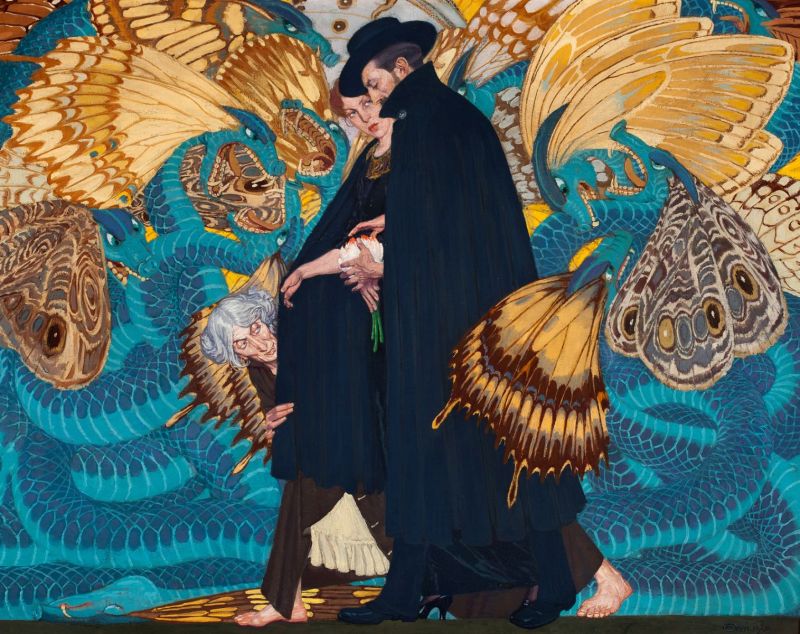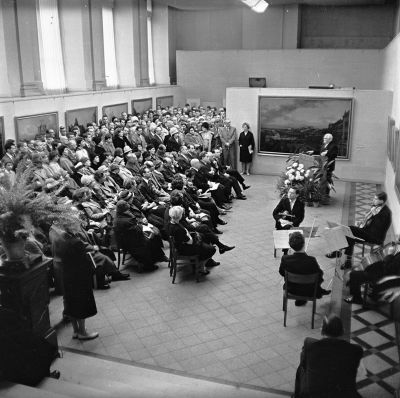Were they really “rebels”? The Munich exhibition “Silent Rebels. Polish Symbolism around 1900”
Mediathek Sorted


































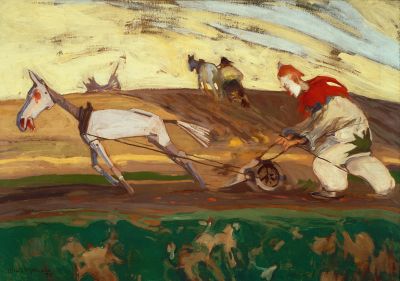


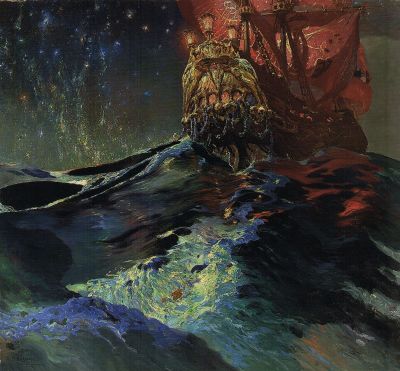
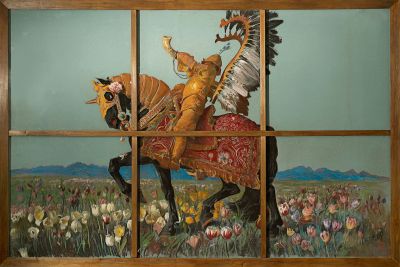



Morawińska continued that it was certainly clear that non-Polish visitors to the exhibition would probably have found it very difficult to understand why certain paintings were defined as being part of the European Symbolism movement.[12] Furthermore, some of the artists represented in the exhibition were only involved with Symbolism for a short period of time. They include Józef Pankiewicz,[13] who is also shown in the Munich exhibition with his purely impressionistic painting “Cart Loaded with Hay” (1890, Fig. 9 ). The Detroit exhibition also included an image of equestrians (“Insurgent Patrol”, 1873) by Maksymilian Gierymski, a genre scene (“At the Entrance to a Tavern”, 1877) by Józef Chełmoński, the conscious “Cloud” (1902, Fig. 13 
In a similar exhibition at the Staatliche Kunsthalle Baden-Baden in 1997–1998, the decision was made, probably in deference to the German public, to use the main title “Impressionism and Symbolism” to describe the “painting of the turn of the century from Poland”. In her introductory catalogue essay, “Polish painting around 1900”, Elżbieta Charazińska also initially focused on the terminology used. She wrote that various different terms had been used to describe the art of turn-of-the-century Poland, such as Young Poland, Modernism, the modern era, New Art, Symbolism and New Romanticism. Of these, “Young Poland” had remained the most appropriate in relation to “the entire epoch from 1890–1914, with all its artistic manifestations, including literature and music”.[15] In her consideration of Symbolism, the author followed the “Symbolism in Europe” exhibition, which was also shown in the Baden-Baden Kunsthalle in 1975–1976, according to which this term also described the “ideological stance of the artists” in Poland, “which at the end of the century questioned the artistic criteria of Realism and rebelled against scientific objectivity and the standard ways of thinking of that era. [...] Intuitively, they rediscovered the world and humankind, attempted to communicate the ‘unsayable’, the hidden, the secret. They professed their adherence to the pan-psychic principle of the material-spiritual universal oneness of the world.”[16]
According to Charazińska, the first Polish artists to experiment with Impressionism and Symbolism belonged to the circle of artists based in Munich. While Aleksander Gierymski focused his attention on the subject matter of his paintings, on light, colour and the vibrations from light, as well as the twinkling of the streetlamps as the sun set, Witold Pruszkowski was the first Polish artist to acquaint himself with the works of Manet and the Impressionists. The night paintings by Adam Chmielowski, which are characterised by love, loneliness and death, tend towards Symbolism, as do his religious scenes, which are infused with mysticism. Meanwhile, the realist, “genre painter and hymnodist of his native landscape” Chełmoński only began creating atmospheric lyrical landscapes with animals and birds as motifs, as well as “night-time landscape paintings with a strong mystical note” in his late works.[17] By contrast, in her portraits, still lifes, interiors and urban scenes, Boznańska created “her own world, independent of the real-life environment”. Charazińska writes that attempts were occasionally made “to assign Boznańska’s works to the Impressionists; yet her oeuvre is beyond any clear classification. The term ‘Intimism’, which has almost been forgotten today, would perhaps best describe the atmosphere and subject matter of her art”.[18]
[12] Ibid., page 469
[13] Ibid., page 473
[14] Ibid., page 496
[15] Elżbieta Charazińska: Polnische Malerei um 1900, in: Impressionismus und Symbolismus. Malerei der Jahrhundertwende aus Polen, exhibition catalogue Staatliche Kunsthalle Baden-Baden 1997, page 11-34, quote page 11
[16] Ibid., page 11
[17] Ibid., page 15
[18] Ibid., page 20





















































































